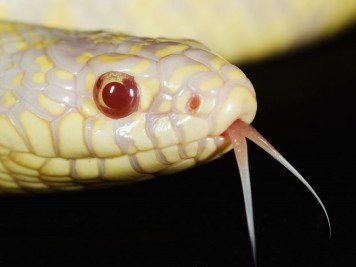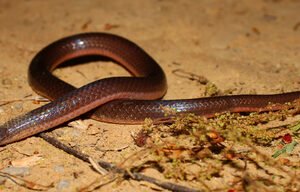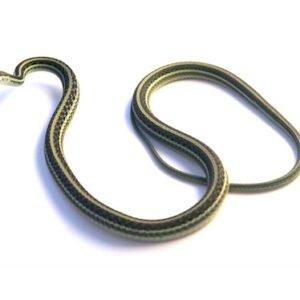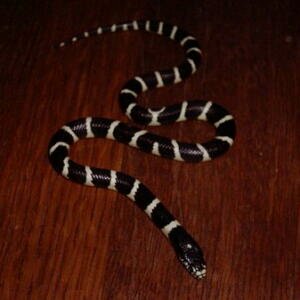Understanding the Albino California Kingsnake
The albino California kingsnake (Lampropeltis getula californiae) represents a distinctive variation of the commonly encountered California kingsnake, celebrated for its striking appearance and unique biological characteristics. This morph exhibits a remarkable lack of melanin, resulting in a stunning pale yellow or white body adorned with contrasting patterns of yellow or brown. The absence of pigmentation is due to a genetic mutation that interferes with melanin production, significantly transforming the snake’s visual attributes compared to non-albino variants.
Typically, albino California kingsnakes reach lengths of 3 to 5 feet, although some individuals may grow slightly larger. Their slender bodies are elongated and slightly flattened, while their heads are proportionally small in comparison, consistent with other kingsnake forms. An intriguing adaptation associated with their coloration is their behavior; these snakes are primarily nocturnal and rely heavily on their acute sense of smell to navigate their surroundings. This behavioral trait is especially significant, as their bright color may make them more conspicuous to predators during daylight hours.
Albino California kingsnakes inhabit diverse environments, ranging from arid desert regions to coastal sage scrub. Their distribution extends across California, and they can sometimes be found in adjacent states. Despite their eye-catching appearance, their unique coloration might pose risks in the wild, as they can be more visible to both predators and prey. However, their pattern and coloration can provide some camouflage in specific habitats, allowing them to ambush a variety of prey, including rodents, lizards, and amphibians. Ultimately, understanding the genetic underpinnings and ecological implications of albinism in California kingsnakes contributes to a broader knowledge of reptilian biology and diversity, underscoring the significance of these fascinating creatures in their ecosystems.
Care and Maintenance of Albino California Kingsnakes as Pets
Providing appropriate care for an albino California kingsnake is essential to ensure its well-being and longevity as a pet. These reptiles require specific habitat conditions to thrive. A spacious terrarium, ideally at least 40 gallons, is recommended to accommodate their active nature. The substrate should be an absorbent material, such as aspen shavings or coconut coir, which can help to maintain humidity levels while facilitating easy cleanup. Proper heating is crucial; a temperature gradient from 75°F to 85°F on the cool end and 90°F on the warm side should be maintained. Using an under-tank heater or heat lamps can effectively regulate these temperatures.
The humidity level should be kept around 40-60%, which can be monitored with a hygrometer. Regular misting can help achieve this balance while also providing a comfortable environment for the snake. It is vital to place hide boxes on both ends of the enclosure to allow the snake to feel secure.
In terms of dietary needs, albino California kingsnakes thrive on a diet primarily consisting of rodents. Juveniles typically eat every 5-7 days, while adults may require feeding every 10-14 days. Appropriate-sized prey—usually no larger than the widest part of the snake’s body—should be offered. It is important to provide fresh water daily and to ensure that any uneaten food is promptly removed to avoid contamination.
Behaviorally, these snakes are known for their docile nature, making them suitable for handling. Gentle handling is encouraged, particularly when acclimating them to human interaction. Regular veterinary checkups are essential for monitoring their health, identifying potential issues early on, and ensuring preventative care. With proper care, an albino California kingsnake can live a healthy life, showcasing its unique beauty for many years.





